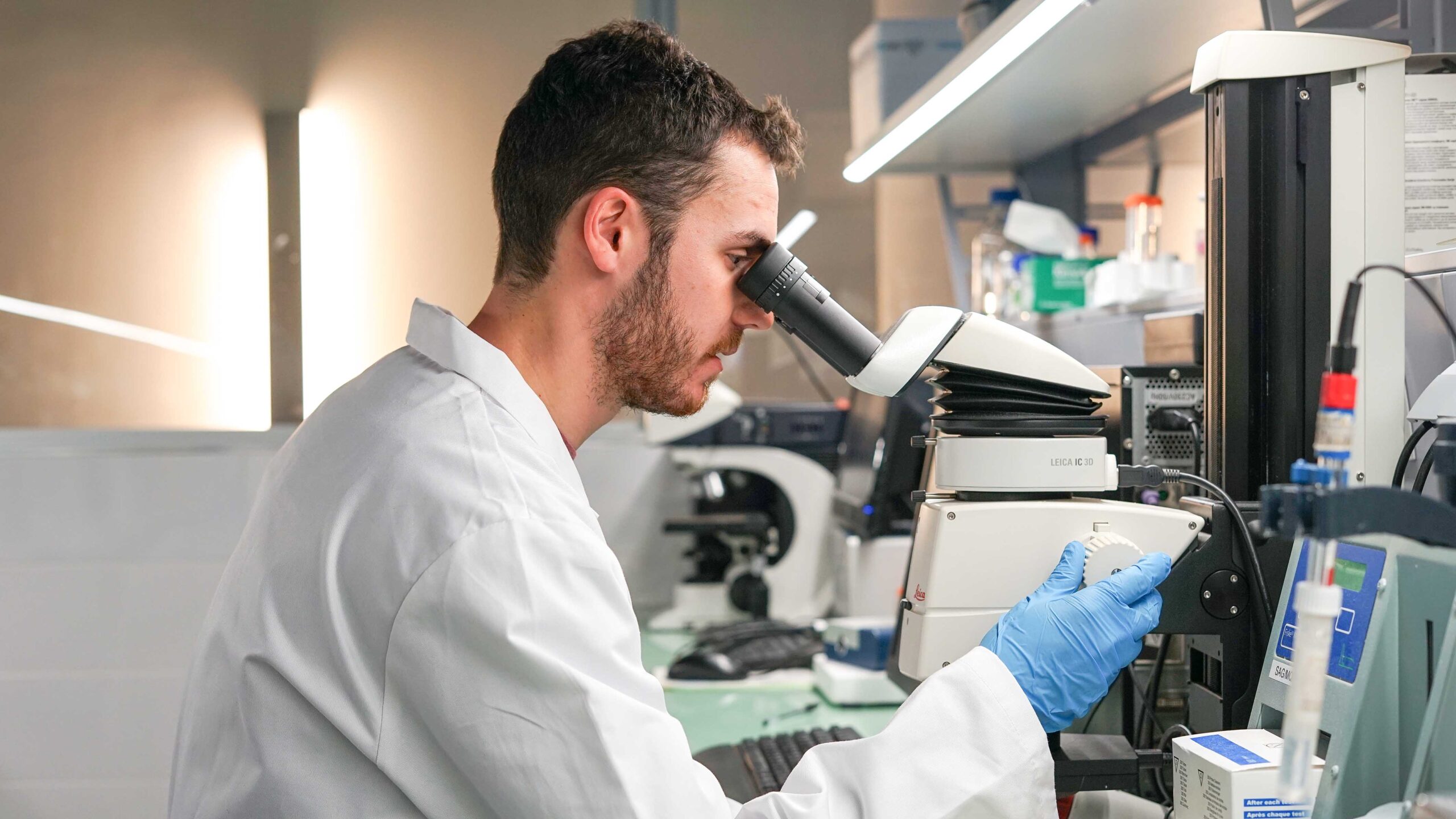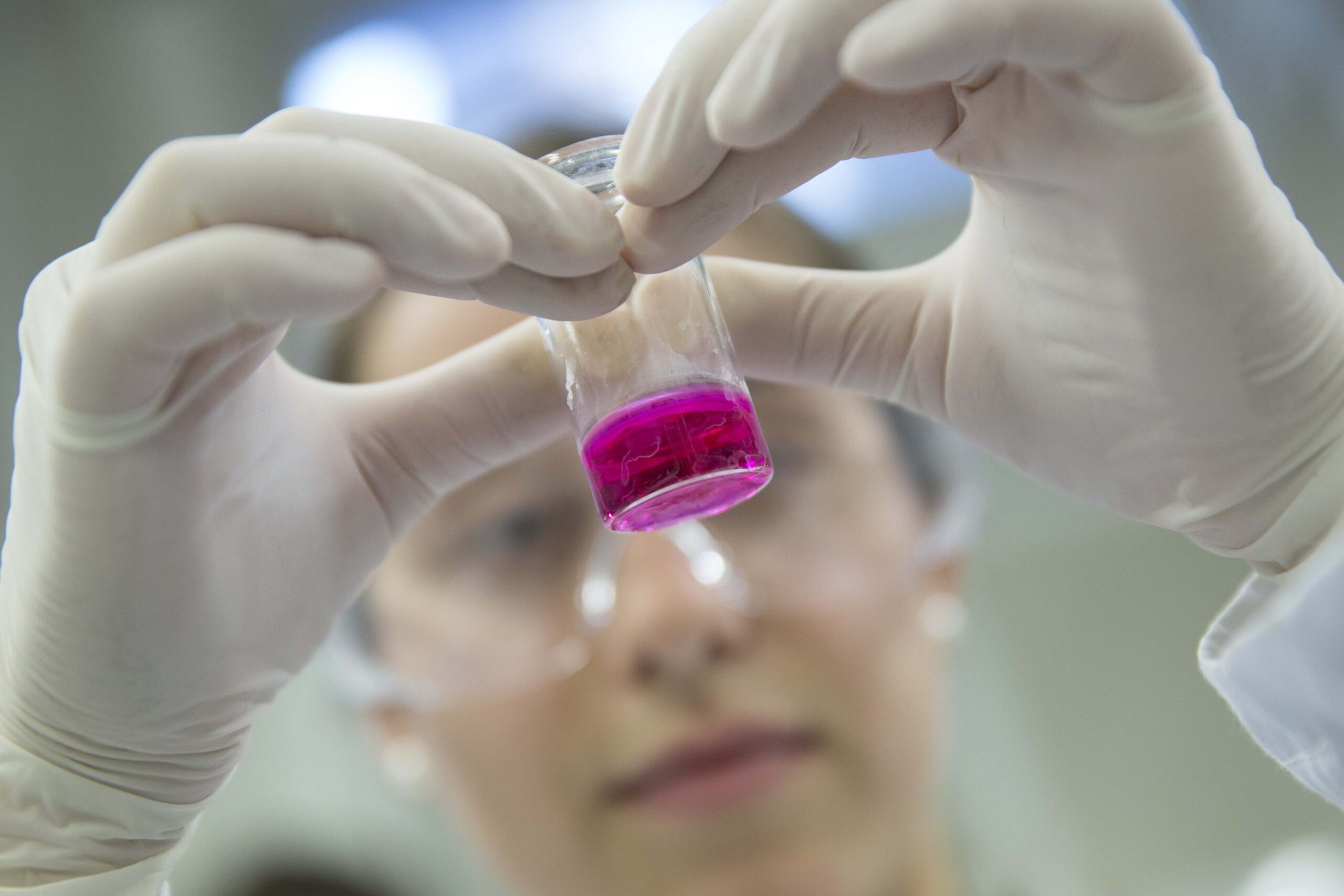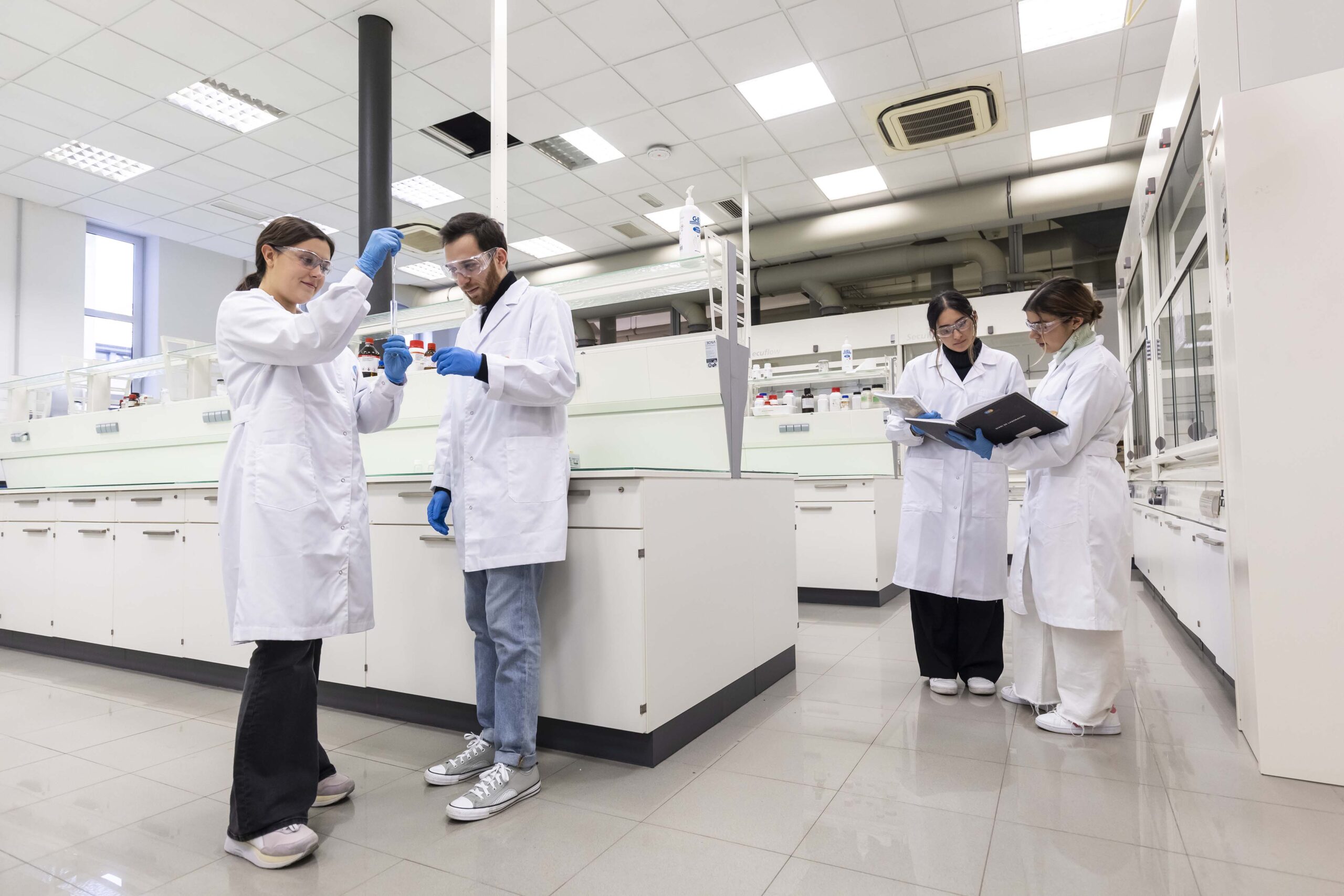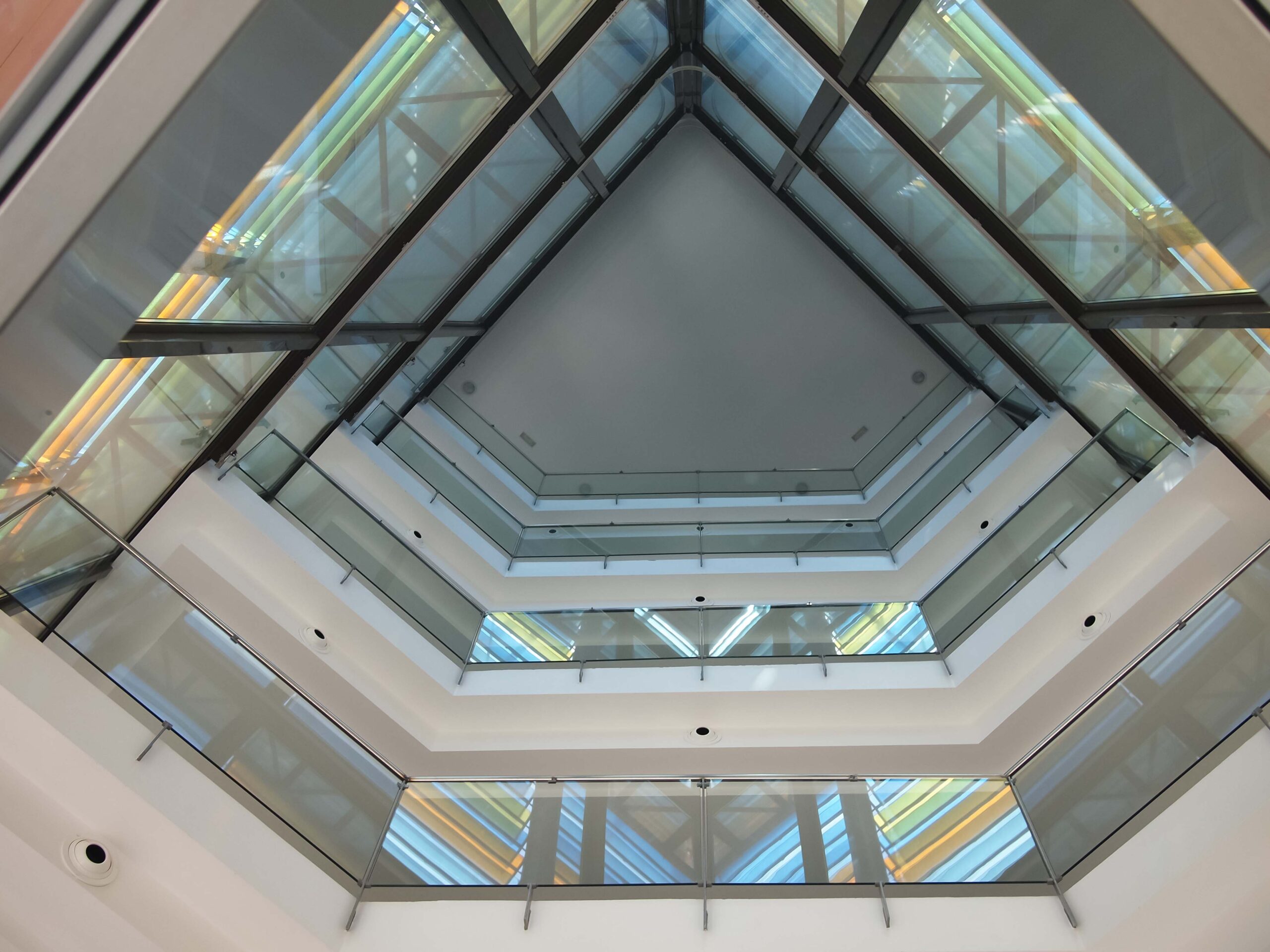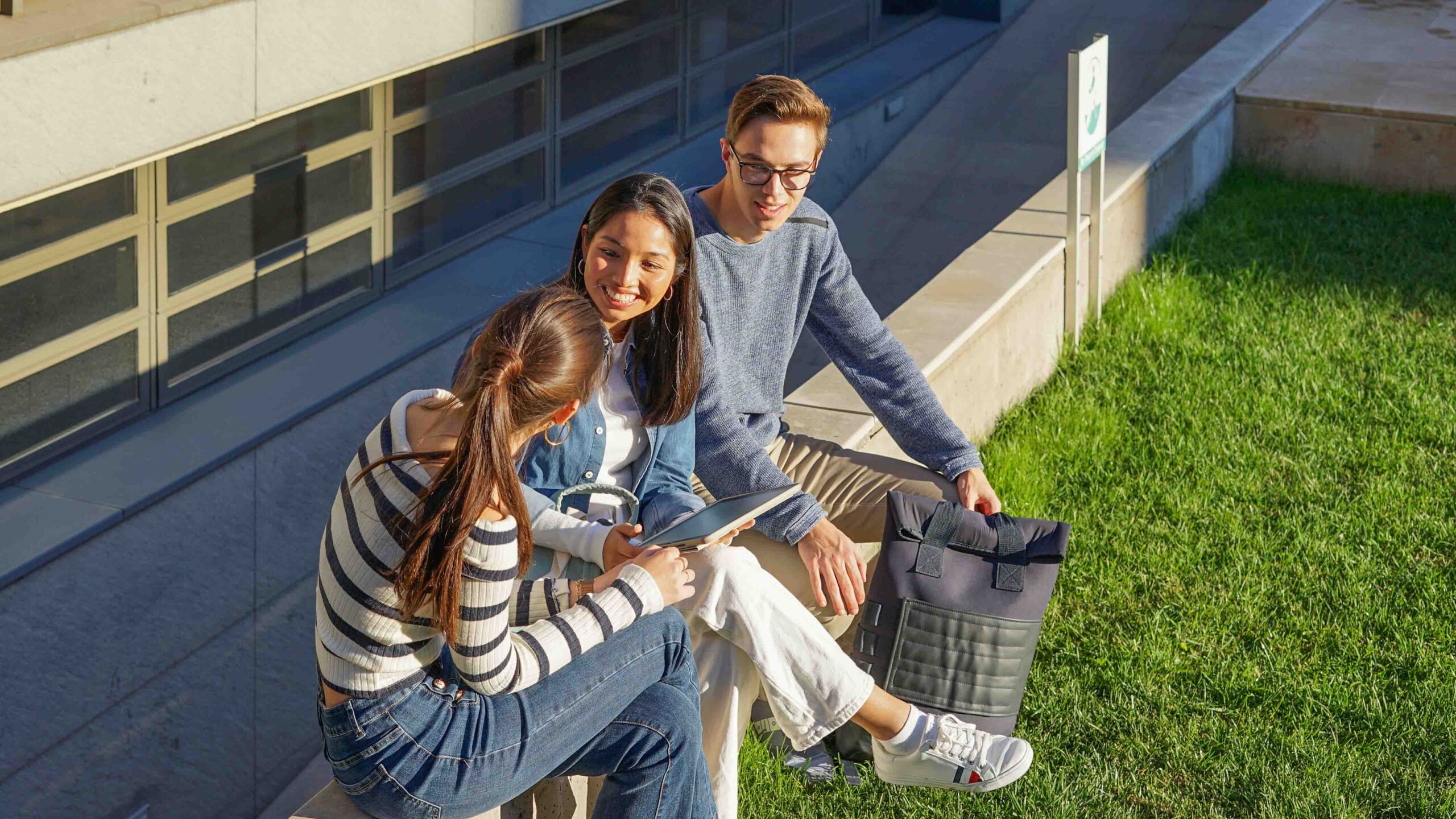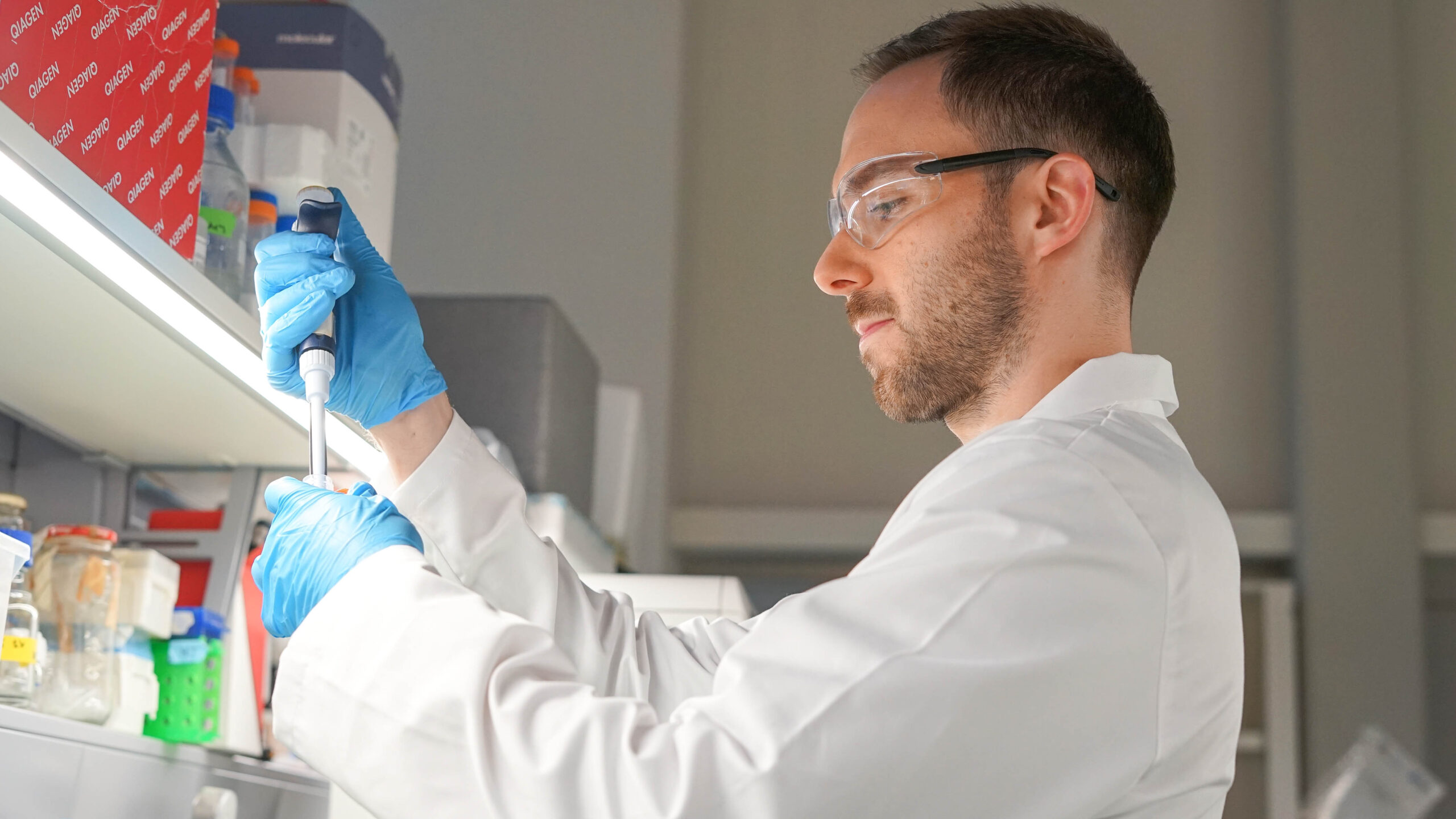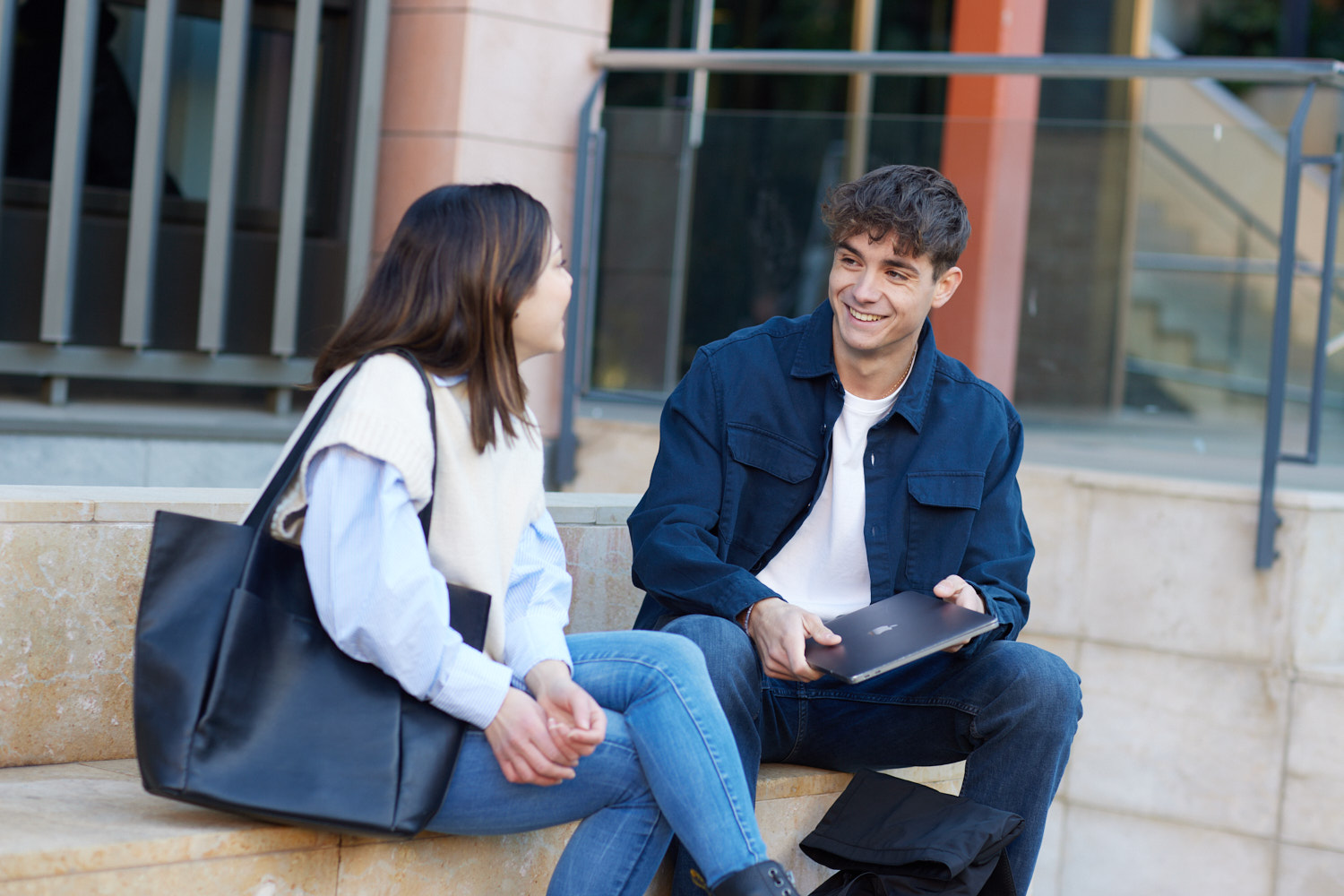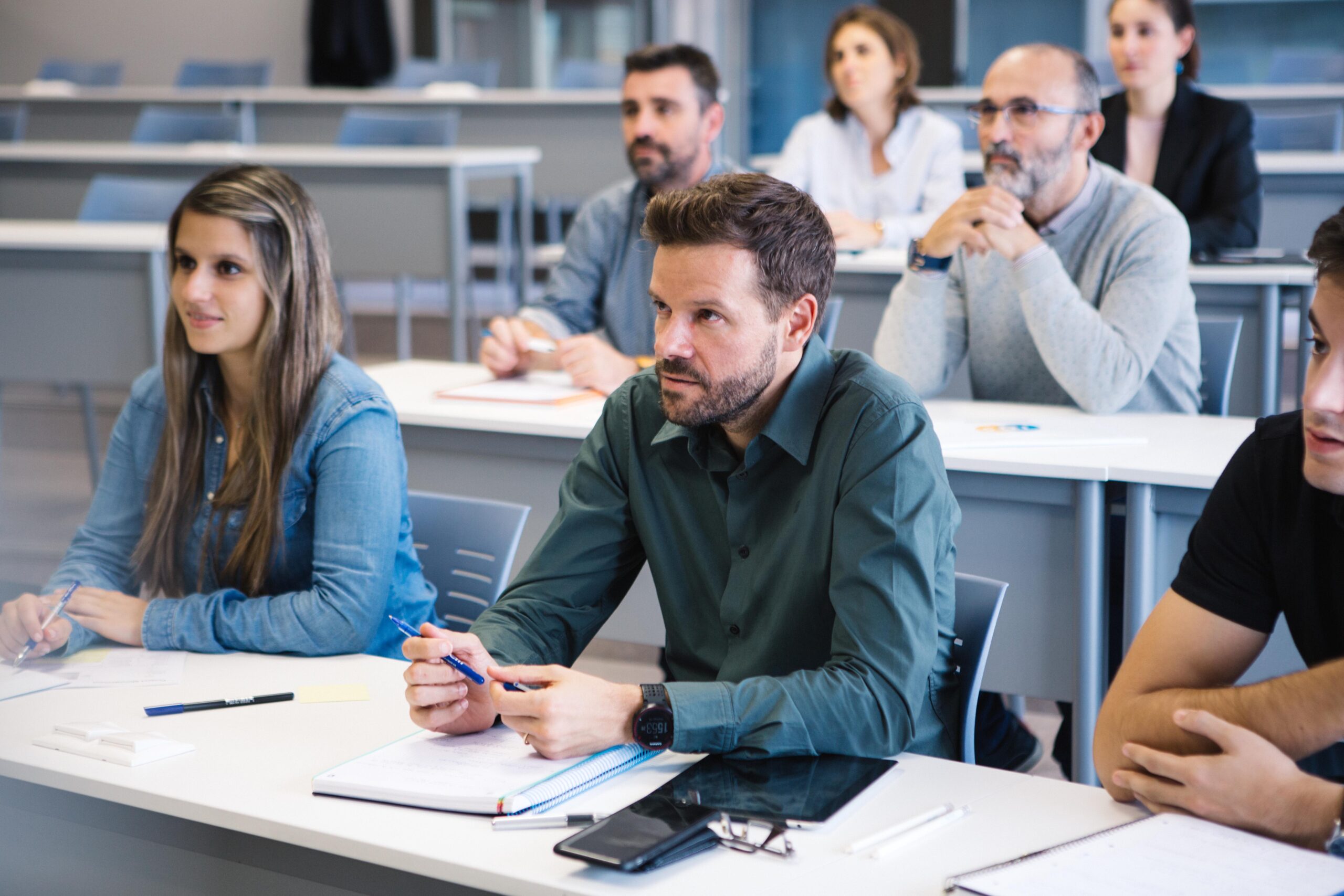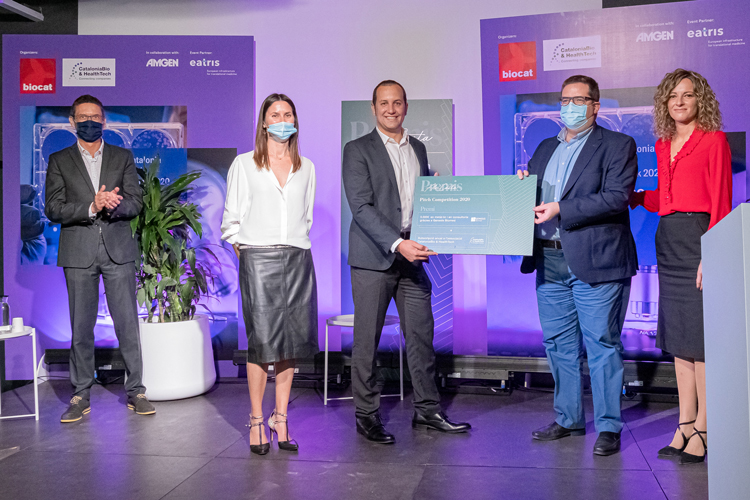“I would like society to understand that science is not only the curiosity of scientists and to internalize that science, through technology, allows them to improve their own wellbeing”.

Dr Jordi Martorell receiving the "Àlex Casta" award
Tell us about your company Aortyx and the team you have there.
Aortyx is a start-up that specializes in the creation of endovascular devices to treat aortic diseases. We founded it in October 2018, with IQS researchers Dr Salvador Borrós and Noemí Balà, and Dr Vicenç Rimbau, Head of Vascular Surgery at the Hospital Clínic de Barcelona. That was the founding team, but now there are already a total of 11 members dedicated to the project. In fact, three IQS students have done their internships with us and three of our members are doing their PhD. We combine individual talent with backgrounds in chemical, biomedical, and industrial engineering along with chemistry, biology, veterinary medicine, and so on.
We have five doctors and four future doctors. And they say a doctorate doesn't guarantee employment! We firmly believe in university education and being multidisciplinary above all else. That said, we'll also need to incorporate people from the business and finance area when we grow a little more.
Currently, we are in the preclinical phases of our first device and we're fine-tuning the regulatory strategy. We have also started the industrialization process for the device and we are implementing the quality system under the ISO 13485 standard.
How did you come up with the idea of focusing on aortic dissection?
The idea came to life in 2015 when we worked with Dr Arturo Evangelista, a world leader in aortic echocardiography, to use fluid dynamics to determine which patients with aneurysms and aortic dissection required surgery and which did not. The conclusion was that developing new solutions was needed, since current solutions fail either because they are overly invasive surgeries or because they do not adapt well due to material fatigue.
The initial versions of the aortic patch material were developed by the Vascular Engineering and Applied Biomedicine Research Group (GEVAB) at IQS, which sparked Dr Rimbau's interest. After obtaining a CaixaImpulse grant from La Caixa in 2017, and achieving some initial success in the laboratory, we decided to found Aortyx with the aim of transferring our invention to the market.
Aortyx won the "Àlex Casta" award for the start-up with the best "pitch" in the Bioregion of Catalonia. How do view this recognition that you have earned and what does it mean for you?
Àlex was a very important player in the Catalan entrepreneurial world who died at a very young age due to an aortic disease. He showed us his support in the very early stages through CaixaImpulse, and it's our duty to work hard so that those who suffer from aortic diseases have better options in the near future. It is an honour to receive the award that bears his name and we are very proud to help raise awareness of the risks of aortic diseases and the importance of a healthy life.
More recently, Aortyx has also been a finalist in the EIT Health Catapult 2020. What does it mean to have achieved this new milestone?
EIT Health Catapult is the most important competition in Europe for start-ups dedicated to health. We are one of the seven MedTech finalists following a pre-selection of over 50 companies and a semi-final round with 14 top-level participants. Although the economic award is quite appealing, the most relevant issue is the exposure to investors and the European ecosystem of investors, who we want to get to know us.
It should be noted that the EIT – the European Institute of Innovation & Technology – has supported us since 2017, within the CaixaImpulse programme, and more recently with Headstart. EIT Health is relatively unknown in Catalonia and we must give more visibility to everything they do for entrepreneurship in Europe.
Let's talk about your device. How does it work and what specific solutions does it provide?
Aortic dissection is a life-threatening condition in which a tear occurs along the length of the aorta. The Aortyx patch is a specific, unique solution that will significantly reduce both mortality and morbidity associated with aortic dissection.
Our approach is a total paradigm shift in these treatments, moving from temporary repair to definitive regeneration, reducing uncertainty and associated costs during surgery, and improving the quality of life of patients as it is a minimally invasive intervention.
Our solution consists of introducing, through an inguinal incision, a steerable catheter that navigates through the aorta up to the dissection. The catheter contains a folded deployer that contains our patch. Upon reaching the tear, the catheter is guided, the deployer is opened, and the patch is exposed to the blood. Its adhesive is activated in a matter of seconds, and the deployer applies homogeneous pressure on the patch, making it adhere to the vascular wall. After the adhesion time, the deployer is folded back onto the catheter and removed from the body.
From the first moment, the patch blocks the wound and promotes tissue regeneration.
What stage is your project in currently? What future challenges does Aortyx face?
We are currently conducting all the tests, laboratory and with animals, that demonstrate that the device is safe, viable, and effective in order to complete the preclinical regulatory steps. We have shown in vitro that the patch allows strong adhesion and migration of endothelial cells and smooth muscle cells, using covalently adhered extracellular matrix molecules, and that its mechanical properties are close to those of healthy arteries. We have shown in vivo, in pigs and soon in sheep, that the patch resists aortic flow. We are still polishing out some details, especially long-term experiments on animals.
I would also highlight that the prototypes of the patch and the catheter are being manufactured in the same facilities and on the same equipment where they will be manufactured once the product is validated. Thus, the transition from prototype to product will be easier.
If all goes well, the clinical phases will begin at the end of 2021. The clinical trials will take place in multiple phases and countries and, after analysing the data, we expect regulatory approval in 2025, which will be progressively expanded to different countries.
What does it mean to be an IQS spin-off?
The IQS mission literally states: "to educate for work that is productive for society, to produce either goods or services that have social value, considering it a duty to return to society what we have received from it." The Aortyx team could not be more aligned with this mission as we are focused on creating goods with social value to give back what we take from society.
Our team is made up primarily by people who were completely or partially educated at IQS. We have visibility, and that allows us to capture talent more easily. Besides, our full integration within the university enables us to have highly-valuable technical resources with which we can carry out tests and optimize our designs. We clearly owe thanks to IQS for the facilities and support we've received so far.
Based on your experience, what recommendations would you give to other entrepreneurs in the biomedical and health fields?
The health sector contributes to social wellbeing because all work and efforts have a direct impact on the community. When working as an entrepreneur in the health sector, you feel that you are contributing to society more than in other fields. However, the logical quality requirements put in place by regulatory agencies complicate an entrepreneur's life in the field of biomedical sciences, since, for example, only one in every hundred drugs that reach human trials ends up being approved and reaches the market. This complicates the search for investors, at least in Europe, where risk aversion is much higher than in the United States. But we must recognize the courage of the investment funds in Spain that are daring to make a bet on healthcare and doing everything possible to make their investments successful, thus attracting more investors to make the system grow.
I would add that the most common challenge for entrepreneurs is getting money to finance their projects, which involves generating trust in people outside of the project. However, the biggest challenges come from managing people. Your team has to run like clockwork if you want the project to move forward. And, above all, you have to celebrate every little achievement you accomplish.
Finally, from your perspective as a researcher, do you have a message you would like to share in these critical moments for everyone?
That there's no use going out to applaud doctors and nurses if you don't wear your mask properly later on. That it shouldn't be a reality that the "actors" on reality shows earn more money than healthcare personnel in this country. That effort at the university level can't be undervalued while excuses are made for mediocrity in elementary and secondary schools.
We're going to save lives and the economy thanks to those who give it their all researching and working, not through tweets and complaining to the government. We have to regain a culture of real effort, a struggle for daily improvement as individuals and as a society.
The authorities must know that scientific literacy is essential for the progress of any country, and that every time a start-up in the healthcare sector fails, opportunities and lives are lost.
I would like society to understand that science is not only the curiosity of scientists and to internalize that science, through technology, allows them to improve their own wellbeing.
